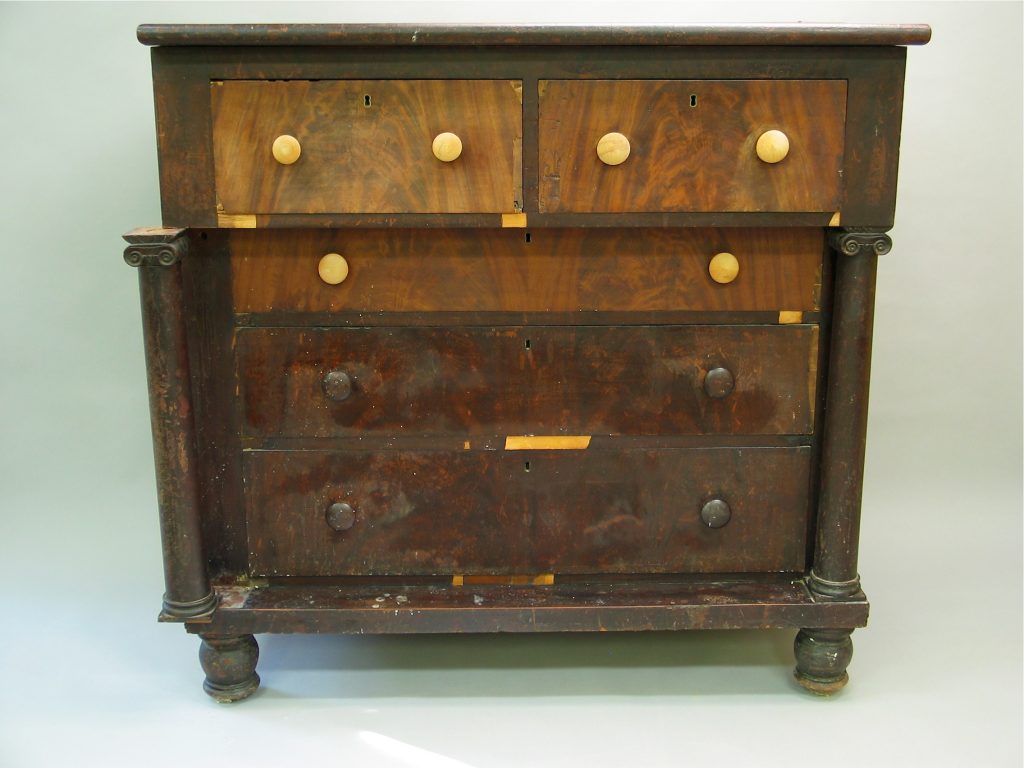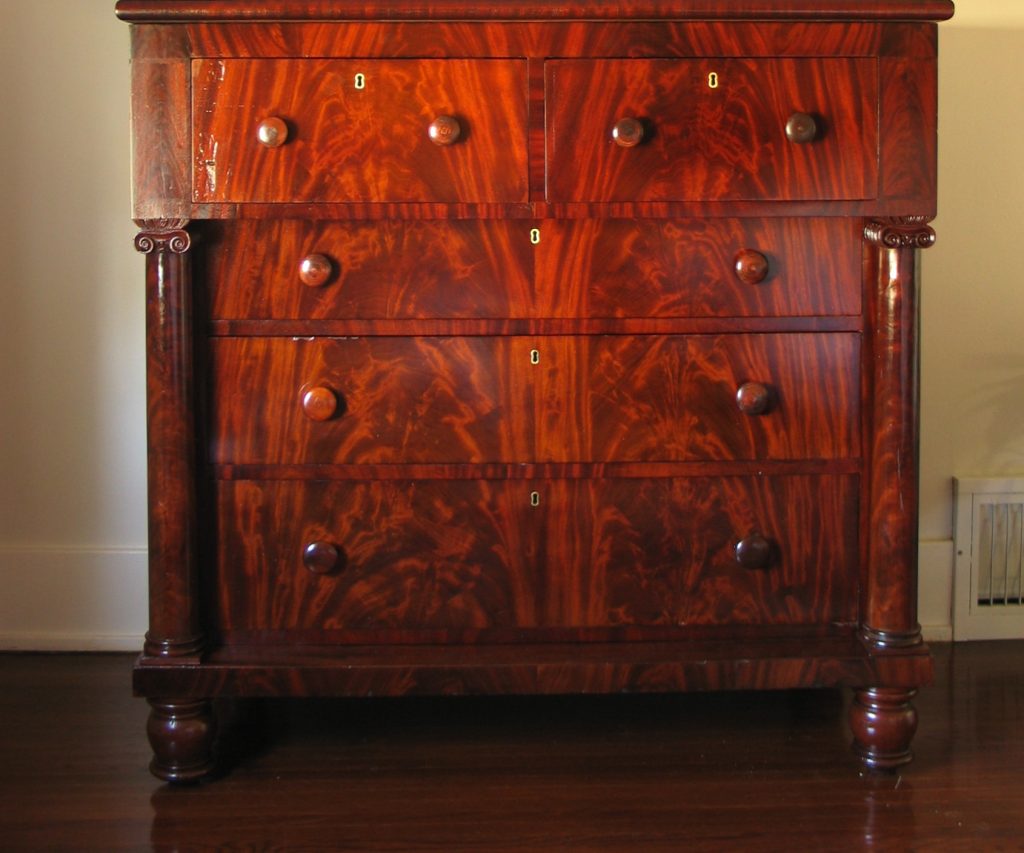We may receive a commission when you use our affiliate links. However, this does not impact our recommendations.

I wrote about my restoration of this mid-nineteenth century Empire chest-of-drawers in issue #219, August 2015.
It has been my intention from the beginning of this blog to include postings about furniture restoration. By restoration I mean wood repair (including regluing), finish repair and refinishing.
For twenty years, from 1976 to 1995 I ran a one-man (me) furniture making and restoration shop. I opened the shop with the intention of just making furniture, but there weren’t enough orders to keep me busy full time, and I didn’t want to do craft shows or galleries. So I started doing restoration.
In fact, there was a refinishing shop half-a-block away with broken furniture stacked from floor to ceiling that hadn’t been fixed. As with most refinishers, the two guys running the shop didn’t have good woodworking skills, but I had them. So getting started with lots of work was easy.
Once I got started, I found it amazing how many people had some keepsake furniture in the attic or cellar that they wanted restored. I never lacked for work those twenty years.
But I was still making furniture when I got orders. After a few years I began realizing that I liked repairing furniture a lot more than making it. I would come to the shop in the morning and pick up on a repair where I had left off the day before, telling myself that I would return to making furniture after lunch. Then I wouldn’t.
I love the challenge of repairing. Not counting simple regluing, I had to figure out how to fix or reproduce someone else’s work or design. I couldn’t stay within the skill levels I had developed. I was forced to stretch and learn new techniques almost every day. Also, the emphasis was almost always on hand-tool skills, which I much prefer over machines.
So by the early 1980s I turned my intention entirely to restoration. It was hard at first to stop identifying myself as a furniture maker because there was a lot of romance around this term at that time, the height of the craft renaissance, and instead call myself a restorer/repairer/refinisher. But slowly I overcame my perceived downgrade, and everything went well from there.
Still, I didn’t find stripping furniture or refinishing furniture nearly as satisfying as the wood repair. So I turned down these jobs unless they included repair. That was where I derived my enjoyment.
Though I intend to include some postings on stripping and refinishing, along with new-wood finishing, of course, and also some thoughts on antique furniture, my main restoration emphasis will be on repair. Keep in mind that once you have removed the finish from an old piece of furniture, applying a new finish is hardly any different from finishing a new piece you have just built.
For the next few postings I will introduce you to the repair books I have found most helpful, then spend a little time on animal hide glue because it was the glue used originally and for most repairs on all furniture before the 1950s, and it is what is meant by “glue” in most of the books I’ll introduce.
By the way, I don’t find an advantage to using hide glue on new furniture, but hide glue provides a huge advantage when working on antiques and old furniture glued originally with hide glue or repaired with hide glue.

Here’s the finished chest.
— Bob Flexner
Here are some supplies and tools we find essential in our everyday work around the shop. We may receive a commission from sales referred by our links; however, we have carefully selected these products for their usefulness and quality.










Bob,
I am curious regarding your comment:
“By the way, I don’t find an advantage to using hide glue on new furniture”
Wouldn’t there be the same advantages there are for antique furniture in that when today’s newly made furniture become antiques and are in need of the same type of repairs you are doing to current antiques? Would love to hear you expand on this thought.